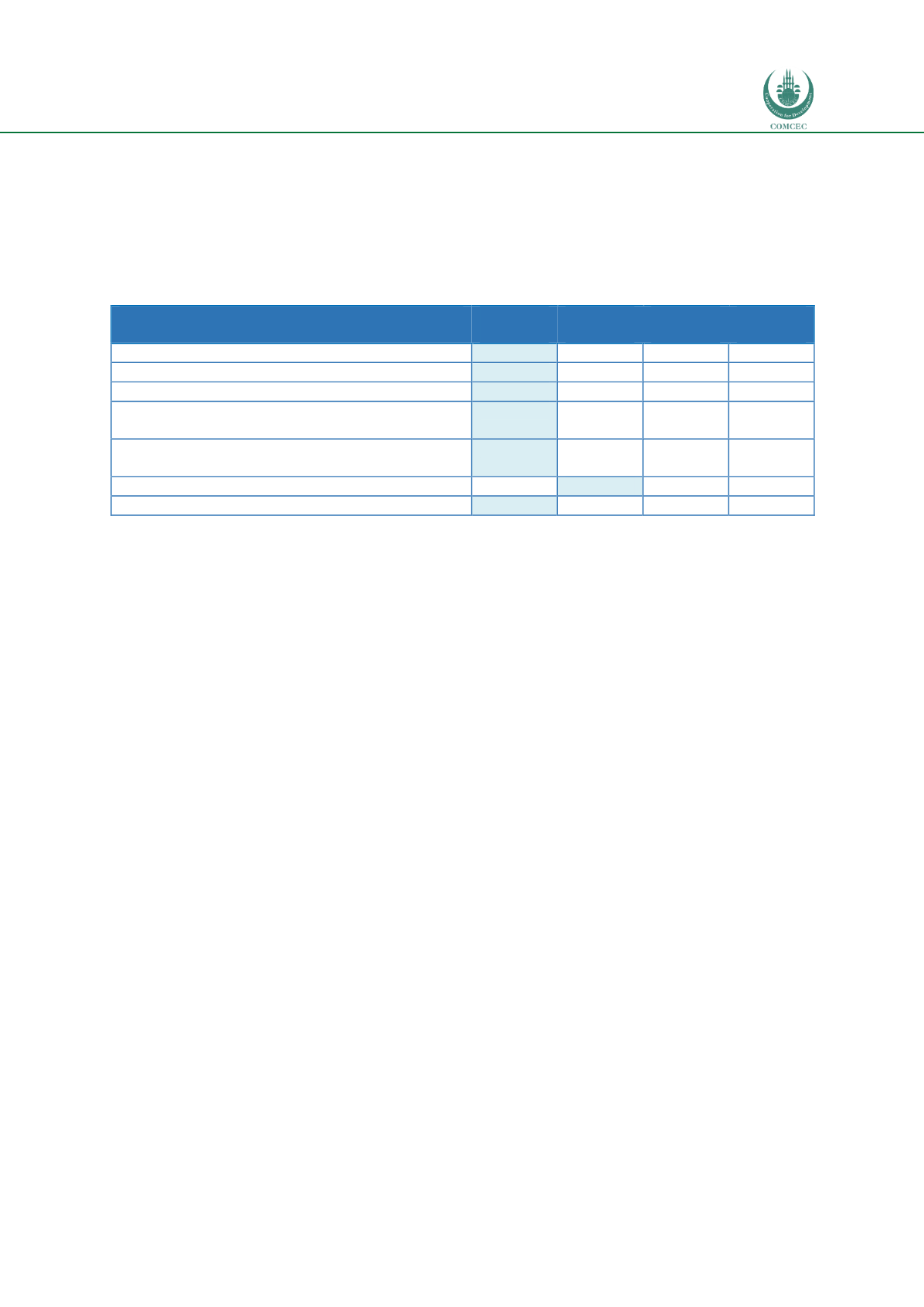

Governance of Transport Corridors in OIC Member States:
Challenges, Cases and Policy Lessons
93
6.1.9
Assessment of transport governance level
The seven corridor governance domains of the UN ESCWA-M40 and Jordan Transit Corridor, as
presented in this section, are ranked against the four defined corridor governance levels (information
exchange; coordination; cooperation; integration), as introduced i
n Table 2.9.The governance levels
are presented i
n Table 6.2.Table 6.2 UN ESCWA-M40 and Jordan Transit Corridor governance levels
Governance domains
Infor-
mation
Coordi-
nation
Coopera-
tion
Inte-
gration
Corridor objectives and political support
Legal framework
Institutional framework
Infrastructure: financing, planning and
programming
Corridor performance monitoring and
dissemination
Corridor promotion and stakeholder consultation
Capacity building: technical assistance and studies
Source: consortium.
6.1.10
Conclusions
In the absence of a regional corridor governance body, Jordan has actively pursued corridor
governance aspects at a national level, notably through an institutional set-up, which was created with
support of an EU TTF support programme. This institutional structure includes the national committee
(NCTTF), the secretariat (ESTTF) and the technical committee (TCTTF). Supported by the combined
efforts of these bodies, a number of corridor governance domains have effectively been implemented.
Crucial in this process is political support, coming from the Government of Jordan that has made TTF
a priority. This is reflected in the National Transport Strategy, which incorporates a great number of
relevant TTF elements.
The void of regional legal arrangements has resulted in an extensive series of MoUs signed with
neighbouring countries, contributing to harmonisation of regulations, standards and procedures. It
should be noted, however, that making such arrangements on a sustainable basis is a challenging
process.
In the institutional structure, there is ample opportunity for broad stakeholder involvement, including
the relevant ministries and departments/commissions, local authorities and private sector. The use of
the corridors in relation to all these stakeholders is actively promoted. It should be noted that on a
regular basis (2015, 2017), regional conferences are organised to which countries from the region are
invited, facilitating regional collaboration where possible. Dedicated studies and capacity building
activities have been organised to improve TTF capacity in Jordan.
The Jordan example of creating an institutional structure, supported by a national policy, with specific
TTF targets, could be seen as an example for other countries to improve corridor governance. This also
in the light of many Trade (and Transport) Facilitation Committees being developed all over the world.
Notwithstanding the positive corridor governance results at national level, a regional operating
organisation could help further improve corridor performance at a regional level. There could be a
potential role for UN ESCWA or LAS to support this process.
















